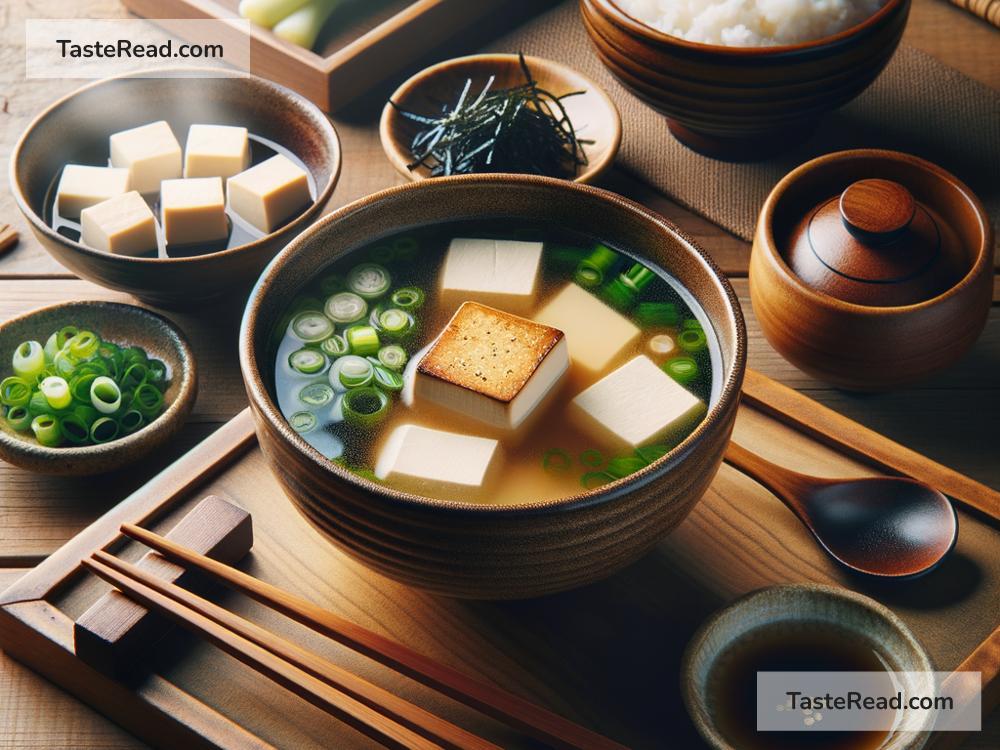The Origins of Japanese Miso Soup
Japanese miso soup is one of the most well-known dishes from Japan, loved for its warm, comforting flavors and simplicity. It can be found everywhere—from traditional Japanese restaurants to modern-day fusion eateries. But where did this humble soup come from? How did it become such an important part of Japanese cuisine? Let’s dive into the fascinating origins of miso soup and learn how it became a key dish in Japan’s culinary tradition.
What Is Miso Soup?
Before we explore its history, let’s first understand what miso soup is made of. At its core, miso soup is a broth-based dish prepared using miso paste (fermented soybean paste) and dashi (a light stock often made from kombu seaweed and bonito fish flakes). It is then combined with ingredients like tofu, seaweed, scallions, and sometimes vegetables or mushrooms. The soup is simple yet deeply flavorful, making it a favorite for everyday meals and special occasions alike.
Miso soup is often served as part of a traditional Japanese meal, alongside rice, fish, and pickled vegetables. Its harmonious mix of ingredients represents the Japanese philosophy of balancing flavors and nutrients in food. But this iconic dish wasn’t always the way it is today—it has gone through centuries of evolution to become the soup we know and love.
Ancient Beginnings: The Arrival of Soybeans
The story of miso soup begins with soybeans, a vital crop in East Asian agriculture. Soybeans originated in China more than 3,000 years ago and were brought to Japan sometime during the Yayoi period (300 BCE–300 CE). Early Japanese communities quickly recognized the nutritional value of soybeans and began producing soy-based foods, including fermented products.
Fermentation was a key method for preserving food in ancient times, especially before refrigeration existed. Soybeans were fermented into a thick paste, which became the earliest form of miso. This paste was salty, tangy, and packed with umami flavor, making it an excellent seasoning for rice, vegetables, and other foods.
It is believed that miso itself was heavily influenced by Chinese and Korean culinary traditions. In China, fermented soybean pastes had been used for centuries, and these techniques were likely introduced to Japan through cultural exchanges between the two countries.
The Birth of Miso Soup: From Royal Palaces to Everyday Homes
History suggests that miso soup became a distinct dish during the Heian period (794–1185), when Japanese cuisine began to take on unique characteristics. During this era, miso was a luxury item consumed primarily by nobles and Buddhist monks. Wealthy families in the royal court used miso paste not only for seasoning but also for making soups and broths.
At first, miso soup was reserved for special occasions. Noble chefs would prepare elaborate versions of the soup, adding seasonal ingredients and using high-quality miso paste. Over time, as soybean production increased and miso became more accessible, the soup spread to lower classes and rural communities. By the Kamakura period (1185–1333), miso soup had become a regular part of samurai diets. Samurai warriors even carried portable balls of miso paste with them during battles, as they could easily dissolve it in hot water to create a nutritious, energizing soup.
The Role of Dashi in Miso Soup
Another key component of modern miso soup—dashi—has its own fascinating history. Dashi, the clear stock made from kombu (seaweed) and katsuobushi (bonito fish flakes), first appeared during the Muromachi period (1336–1573). The discovery of kombu’s savory flavors revolutionized Japanese cooking, providing a lighter and more refined base for soups, stews, and other dishes. Pairing dashi with miso paste was a natural fit, as both ingredients enhanced the soup’s rich umami taste.
By the Edo period (1603–1868), miso soup had become a staple of Japanese households. Common folk enjoyed it alongside rice, pickled vegetables, and grilled fish—a meal layout that remains popular in Japan today. Miso was produced locally, and each region developed unique variations of miso paste, resulting in distinct flavors and styles of miso soup. For example, white miso (shiro miso) is sweeter and milder, while red miso (aka miso) has a stronger, saltier taste. The wide variety allowed the soup to adapt to different climates, crops, and preferences.
Modern-Day Miso Soup
Today, miso soup is enjoyed not only in Japan but all over the world. With globalization and the spread of Japanese cuisine, miso soup has become a symbol of healthy, wholesome food. Ingredients and recipes have evolved, with chefs experimenting by adding meat, eggs, or Western vegetables to traditional miso soup.
Despite these changes, the essence of miso soup remains the same—it is a simple yet deeply nourishing dish rooted in history. For many Japanese families, miso soup is a comforting reminder of home, connection, and tradition.
Conclusion
Miso soup is much more than just a bowl of broth; it is a dish with thousands of years of history and cultural significance. From fermented soybean paste in ancient China to a staple in Japanese households today, miso soup’s journey tells the story of how food evolves over time. Whether you enjoy it plain or with hearty additions, each bowl carries the spirit of Japan’s rich culinary heritage. So the next time you savor miso soup, remember that you’re tasting centuries of tradition in every sip!


